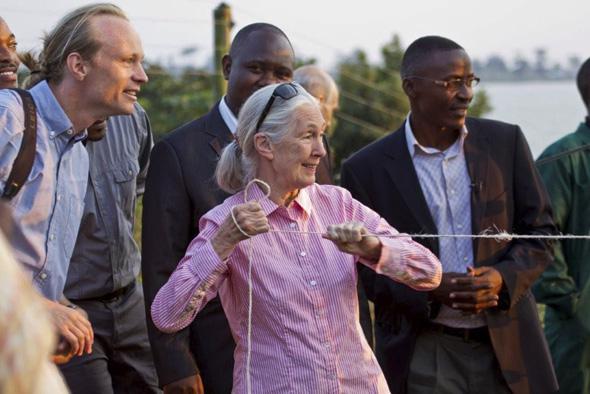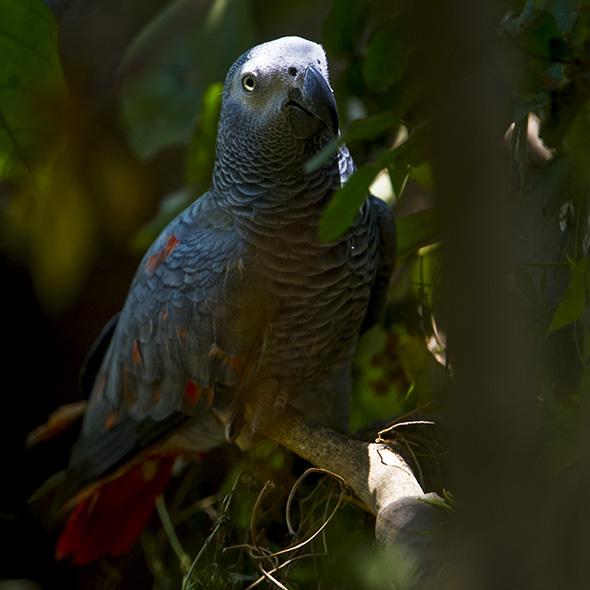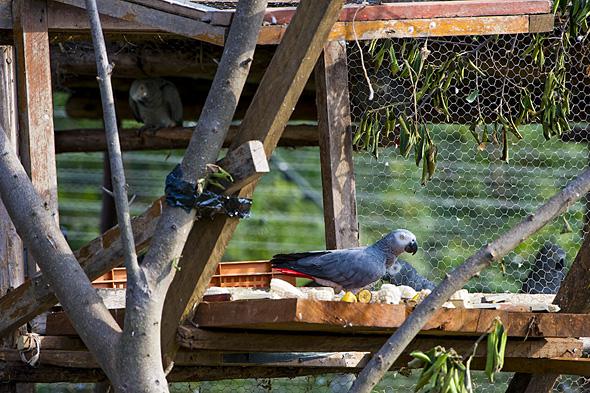On President Barack Obama’s trip to Africa this summer, he made history with a major speech on wildlife trafficking. The illegal trade in wildlife is one of the top threats to wildlife worldwide, and it is on the rise globally. The presidential spotlight on the issue is invaluable.
As Obama was making his speech in Tanzania, I was also in Africa, working on a historic project in the fight against wildlife trafficking. With Jane Goodall, I was part of a four-person team from the World Parrot Trust. We were in Uganda to release a group of African Grey parrots that had been confiscated as they were being smuggled into Bulgaria. It was the first time that parrots smuggled out of Africa were returned to the continent and released back into the wild.
“It’s a story of how bad the trade has become,” Goodall said over dinner the night before the release. “And it’s a story of hope.”
African Grey parrots are among the most heavily traded of all animals. Their popularity is fueled by recent research on their astonishing intelligence. In some ways, their cognitive abilities rival those of a 3-year-old child. Alex, the “genius” African Grey parrot studied by Irene Pepperberg, had a vocabulary of more than 100 words and a sassy tongue—a smart Alex.
They may be the smartest birds in the world.
According to Rowan Martin, the energetic ornithologist who managed our release of the parrots, about 2 million African Grey parrots have been captured from the wild for the global pet trade since 1975.
This figure is staggering. Most of the parrots were captured as part of a thriving legal trade in wild-caught parrots. It seems counterintuitive: Obama and many conservationists focus on the illegal trade, with its shadow world of poachers and smugglers, but the real problem may be the legal trade itself.

Photo by Sherry McKelvie*
On July 10, Goodall and Martin pulled on a long rope, and a window slowly jerked open on the makeshift aviary where the confiscated parrots were housed. The parrots didn’t rush to freedom as you might expect. Instead, they hunkered in the corner of their aviary. Unassuming gray birds with fiery crimson tails, these parrots have clear yellow eyes and the stare of fully conscious beings. They eyed us from afar with evident distrust and suspicion.
It was understandable. They had been through hell. It had been 3½ years since they were captured, probably in the Democratic Republic of the Congo. They were smuggled out of Africa into Lebanon, given fake papers, and shipped to Bulgaria. A sharp-eyed customs official seized the shipment of 108 parrots when he noticed a problem with the papers. Most of the birds were in bad shape. Several died shortly after arrival at Bulgaria’s Sofia Zoo.

Photo by Charles Bergman
It took the World Parrot Trust another three years to find a suitable place to release the parrots, to navigate the international bureaucracy, and to rehabilitate the birds sufficiently for release. Uganda agreed to the release on Ngamba Island, in Lake Victoria. The island is a forested sanctuary for orphaned and rescued chimpanzees, an ideal place to safely release the parrots.
African Grey parrots can live as long as 40 to 50 years with good care in captivity, and perhaps 20 to 25 in the wild. But just 17 out of 108 confiscated birds were still alive—sad testimony to the trauma and suffering that the trade inflicts on its creatures.

Photo by Charles Bergman
The released parrots reveal the strange entanglements of the legal and illegal trade. The legal trade often serves as a cover for traffickers—just as these parrots had been “laundered” in Lebanon—and many argue that it supports higher levels of trafficking. In a system where monitoring and enforcement are feeble to nonexistent, traffickers exploit a simple fact: It’s very difficult to tell a legal parrot from an illegal parrot.
“There’s no doubt,” said James Gilardi, president of the World Parrot Trust, “the legal trade promotes, encourages, and provides cover for the illegal trade.”
The brief against the legal trade goes deeper, to the heart of the system itself. Martin put it this way: “People think as long as there is a legal trade—that it’s being managed and supervised. If it weren’t sustainable, they would not allow the trade. I certainly thought that.”
It’s hard to argue the legal trade in African Grey parrots has been well-managed. According to BirdLife International, 21 percent of the wild Africa Grey parrot population has been harvested annually during some periods. The legal trade has a 40 to 60 percent mortality rate between capture and export. The result is predictable—the African Grey parrot has suffered dramatic declines. It is gone in many places and rare in others.
The illegal trade provides a narrative that lays the blame on poachers, often poor people in struggling developing countries. Or on the dark romance of smuggling. A narrative that examines the legal trade requires a shift in thinking and brings the issue home. Protecting valued wildlife is a policy issue, one with global implications—and we all can influence policy.
The global trade in parrots and other wildlife is managed by the Convention on the International Trade in Endangered Species, which sets quotas for legally traded species. According to the World Parrot Trust, CITES will consider a proposal to end the legal trade in African Grey parrots at its next meeting, scheduled for 2016 in South Africa. There will be determined resistance, and success will require broad international pressure.

Photo by Charles Bergman
Meanwhile, at the aviary on Ngamba Island, the 17 African Grey parrots took a day to leave their aviary. Most departed in the morning of the second day. They took off in small groups. Some flew up over the canopy and disappeared, using wings that had not flown in years. One landed on a big branch high above the aviary. Lit by morning sun, it had a vast view of Lake Victoria.
It was deeply moving to watch those first flights, knowing all the trauma and stress the parrots had endured. What must these smart birds think, at this moment, I wondered—so suddenly and unexpectedly free? It felt great to be part of a historic project, returning parrots to the African wild, after a long history of removing them from Africa to live in cages.
Goodall is right: The release of these smart parrots offers a story of hope—hope that we may be able to fight traffickers and restore African Grey parrots in Africa. The greater hope, and the greater lesson, of these smart birds is that we must broaden our focus. It’s time to examine the failings in the legal trade in wildlife.
Correction, Nov. 13, 2013: Due to a production error, this post originally misidentified the photographer for the Jane Goodall image. Sherry McKelvie, not Charles Bergman, took the photo.
